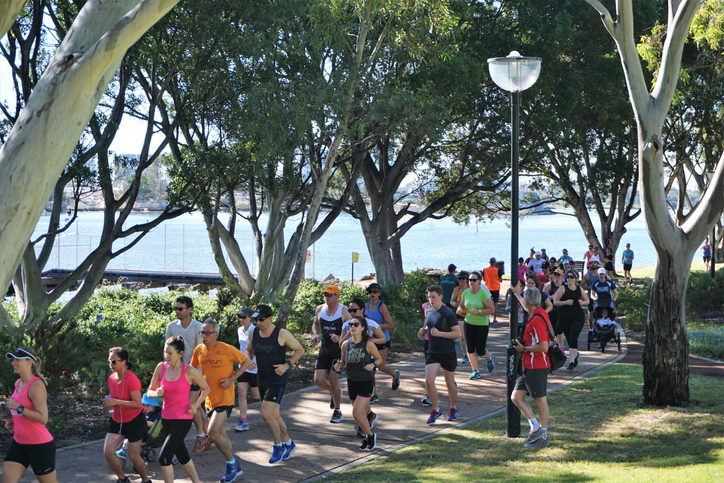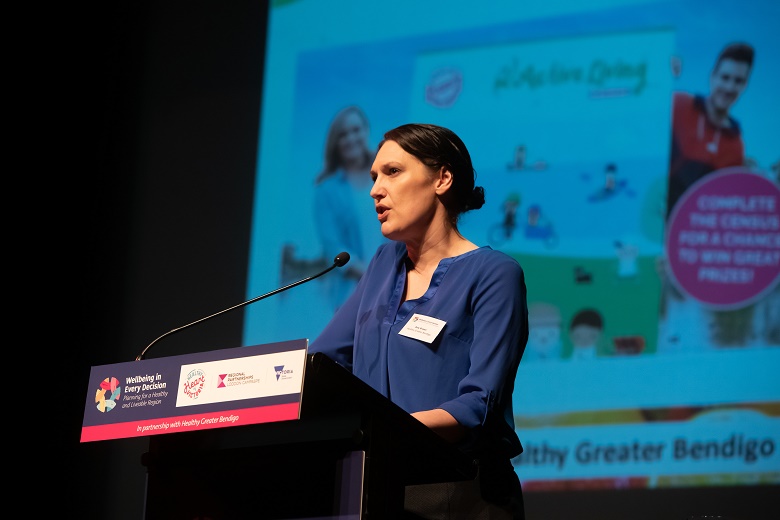
An active living census that has provided insights into the health and wellbeing of thousands of people in central Victoria’s Loddon Campaspe region is providing policy, investment and infrastructure guidance for local councils.

The census, a first for the region, went out to about 25,000 households with questions about residents’ health, activities they enjoy and public spaces they use, with the aim of building healthier communities.
The six councils included in the census were Campaspe Shire, Central Goldfields Shire, Loddon Shire, Macedon Ranges Shire Council, Mount Alexander Shire and City of Greater Bendigo.
The census is part of the Healthy Heart of Victoria initiative, which was awarded $5 million from the Victorian government.
Dave Richardson, Chair of Loddon Campaspe Regional Partnership, said the results showed that people in the region were more obese than the state average and exercising less.
“People from our region are eating less healthy food than the state average and have less food availability or food security, not because food is not available but because of financial circumstances. There’s a lot of poverty in our region,” he told Government News.
The census revealed that two in every three adults, or 62.5 per cent, in the Loddon Campaspe Region were overweight or obese, which is higher than the state average of 49.7 per cent.
The number of adults consuming sugary drinks on a daily basis, at 14 per cent, is also higher than the state’s average of 11.2 per cent.
One in 10 households, or 9.2 per cent, in the Loddon Campaspe Region are food insecure. In some areas, this increases to one in 7 households. The state’s average is 6.2 per cent.
“The findings give us further insight into policy, into investment, into the types of infrastructure, the types of programs and the types of resources that we need to put in place to drive the action to achieve the outcomes of a healthier community.”
He said the findings from the census will help inform local governments in the region on how to build healthier communities.
“The findings give us further insight into policy, into investment, into the types of infrastructure, the types of programs and the types of resources that we need to put in place to drive the action to achieve the outcomes of a healthier community.”
Although the results were released just last month, the region is already starting to act on them to make changes in the community.
The Uber of athletics
In the census, Central Goldfields Shire residents said that improved footpaths and walking tracks would help them increase their physical activity.
Healthy Heart of Victoria, which had access to the results before they were released, has since upgraded and widened the Goldfields Reservoir track and helped set up the first parkrun in Central Goldfields.
“The parkrun is something that’s become a world-wide phenomenon… it requires no organisation, no committees,” Mr Richardson says.
“It’s like the Uber of athletics. It just gets people together very quickly to engage in some fun activity in a non-competitive way, and it’s done on a weekly basis.”
Approximately 250 people participated in the first parkrun in the suburb of Maryborough, a low socio-economic city. It had a better turnout than the Bendigo parkrun, which has been running for several years in a city with more people.
“A huge success, but it was only generated and initiated on the back of the Healthy Heart of Victoria initiative. And the nice thing about it was that it didn’t need a lot of infrastructure,” Mr Richardson said.
Informing place-based approaches
Amy Brown, Project Manager of the Active Living Census and Executive Officer of Healthy Greater Bendigo, said this type of data is a first for the community.

Previously, the region relied on health and wellbeing data provided at a local government area level, but this didn’t provide enough detail, according to Ms Brown.
“With the increase of placed-based approaches, we needed something more detailed and fine-grained than that,” she told Government News.
“So this certainly allows us to look across our municipality and our communities and look at the needs of small towns, as opposed to just making assumptions based on local government area level data.”
Mr Richardson said the Active Living Census provides good evidence-based information about investment in place-based solutions that will make a difference.
“You’re getting accurate data and evidence about what the issues that you’re trying to solve are. You haven’t got some (hit and miss) strategy that you’re going to make a difference whilst wasting rate payers fund or government tax payers fund.
“You’re actually using an evidence-based approach to addressing problems directly and coming up with really good unique place-based solutions.”
The Active Living Census was based on a census that ran in the City of Greater Bendigo for five years. It was updated with a few tweaks for the region, with more questions surrounding demographics, Ms Brown said.
Selected Findings reports for the six local government areas are currently in development and will be released in the coming weeks.
Comment below to have your say on this story.
If you have a news story or tip-off, get in touch at editorial@governmentnews.com.au.
Sign up to the Government News newsletter